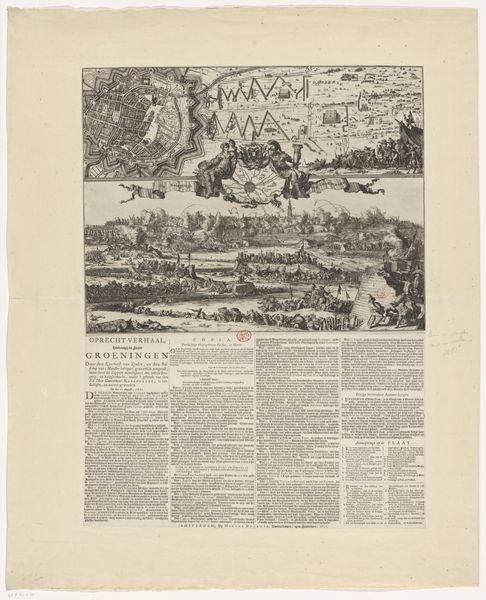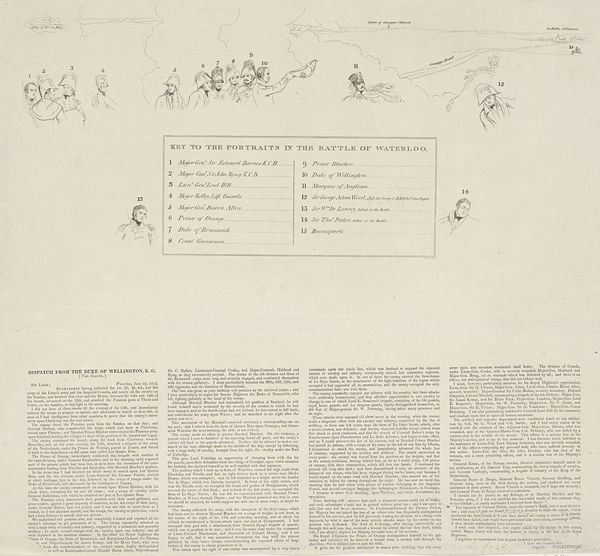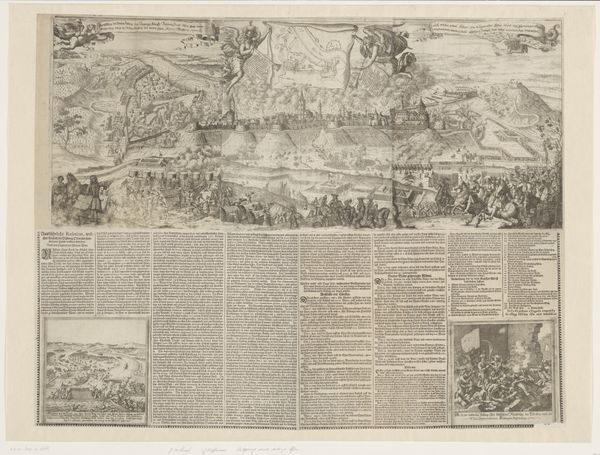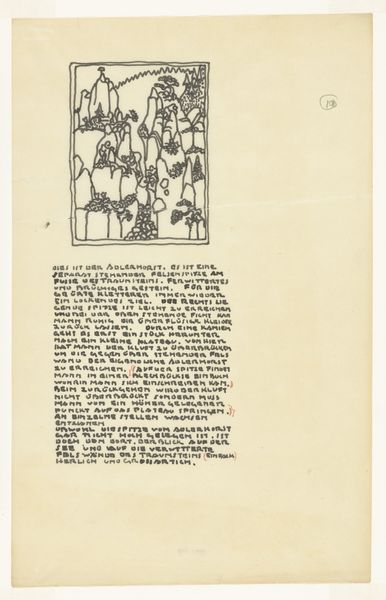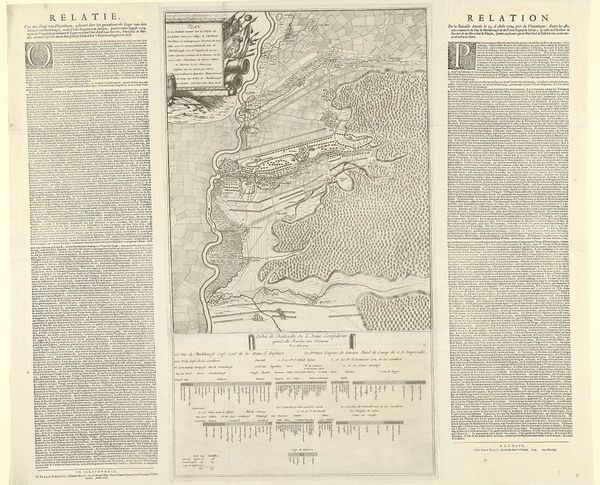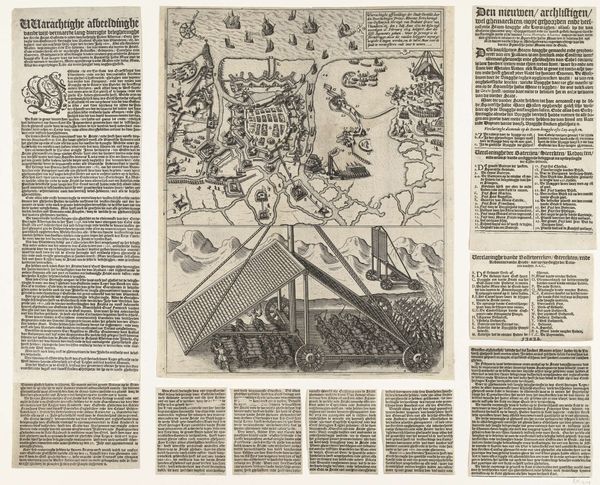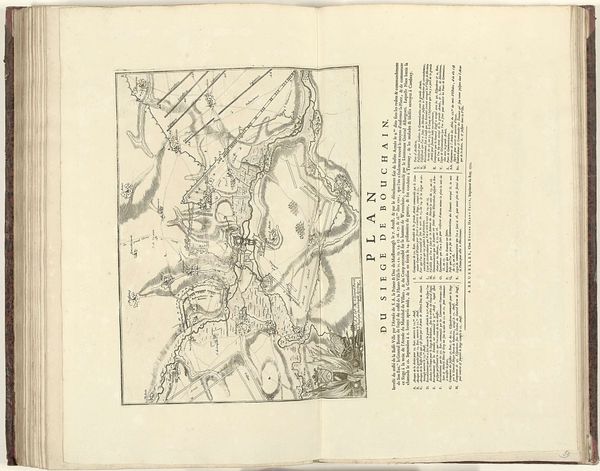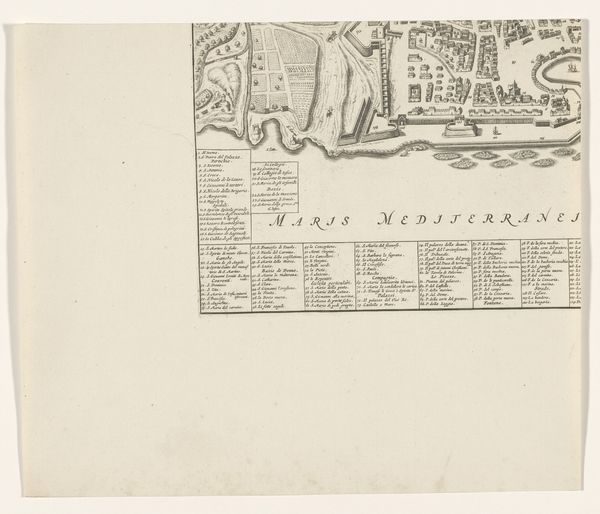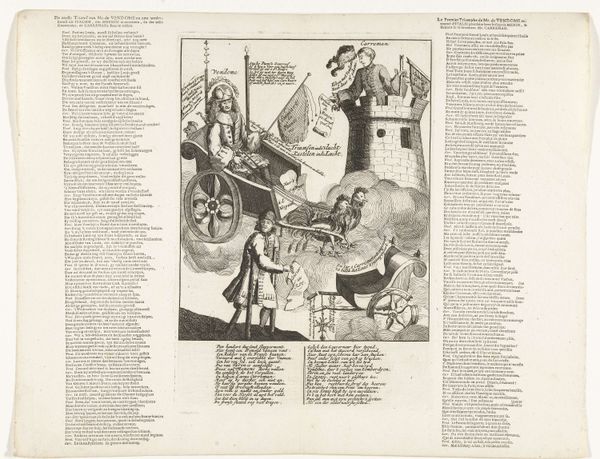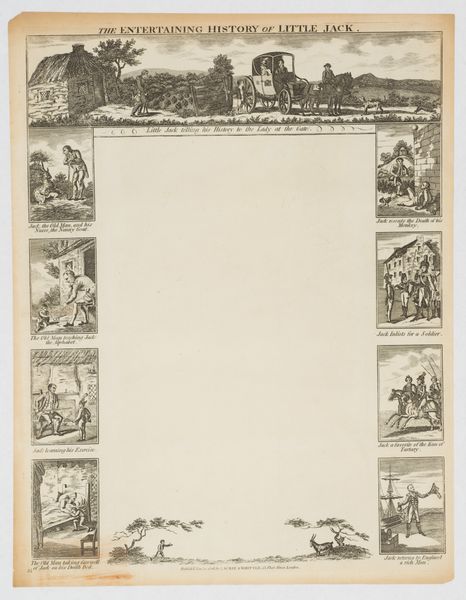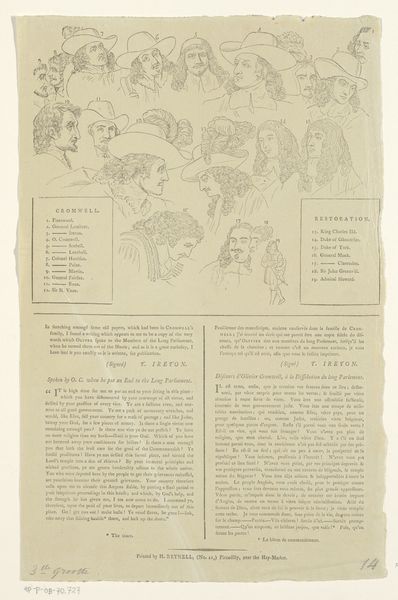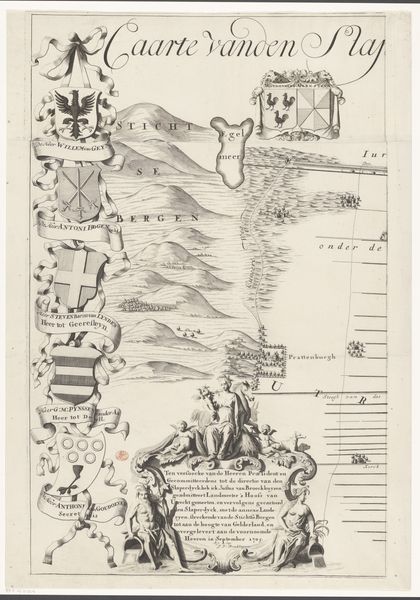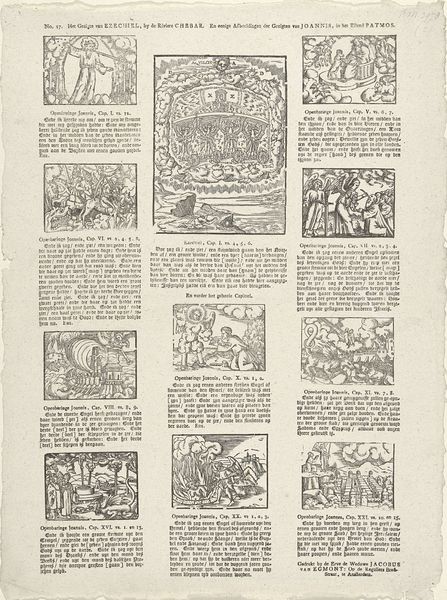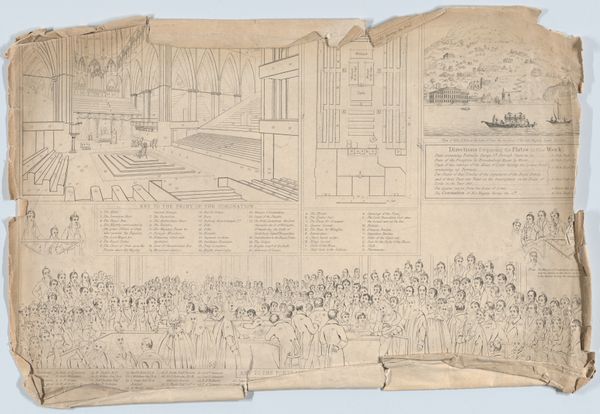
print, engraving
# print
#
landscape
#
history-painting
#
engraving
Dimensions: height 755 mm, width 815 mm
Copyright: Rijks Museum: Open Domain
Curator: Editor: This engraving, "Slag bij Ramillies, 1706" by Jan van Vianen, looks like a complex document blending cartography and historical narrative. There’s text, a battle scene, a map – all meticulously rendered. What really strikes me is how information dense it is. What do you make of its visual language? Curator: It’s fascinating to consider this print as a form of early data visualization, wouldn’t you say? The copperplate engraving process itself – the labor, the skill in transferring information – all speaks to a desire to capture and disseminate this victory, Ramillies. It’s a record of military might, obviously. But also of early information technology! Editor: So the act of creating this, choosing engraving as the medium, is as significant as what it depicts? Like how information itself becomes a kind of commodity. Curator: Exactly. Who would consume such a print? Was it aimed at informing or impressing the populace? Think about the accessibility and cost of this object in 1706. Also, think of the process itself, copper mines, engravers' workshops – it's deeply rooted in 18th-century industry. Editor: That's an interesting angle! I was so focused on the artistry, but the labor and industrial context completely change how I see it. It’s no longer just about the battle, but about how that information was produced and disseminated to its 18th century consumers. Curator: Precisely. It urges us to contemplate the material conditions that enable knowledge and its circulation, revealing a different type of landscape, that of 18th-century production. Editor: Thank you for making me see how an artwork's production can say as much as the work itself! Curator: Absolutely, recognizing the interplay of material and cultural meaning can be enlightening.
Comments
No comments
Be the first to comment and join the conversation on the ultimate creative platform.
